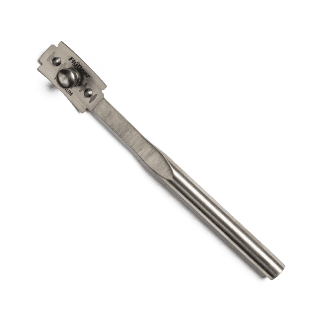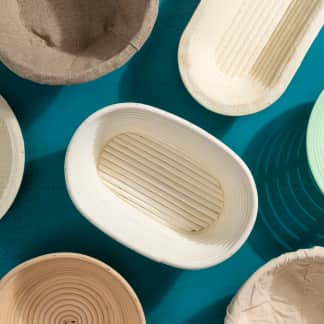The best lames score bread dough nicely and are easy to use and grip in different ways. They also make it easy to attach and remove blades. Our all-around favorite lame is the Baker of Seville Artisan Bread Lame. It’s a cinch to configure and can be held comfortably in different ways. Best of all, it can be adjusted so that the blade is either curved or straight, making it a great option for simple and complex scoring alike. For the most intricate scoring, we also love the Wire Monkey UFO Bread Journey. It’s a little tricky to attach and remove blades on this lame, but it provides unparalleled control for the most detailed designs.
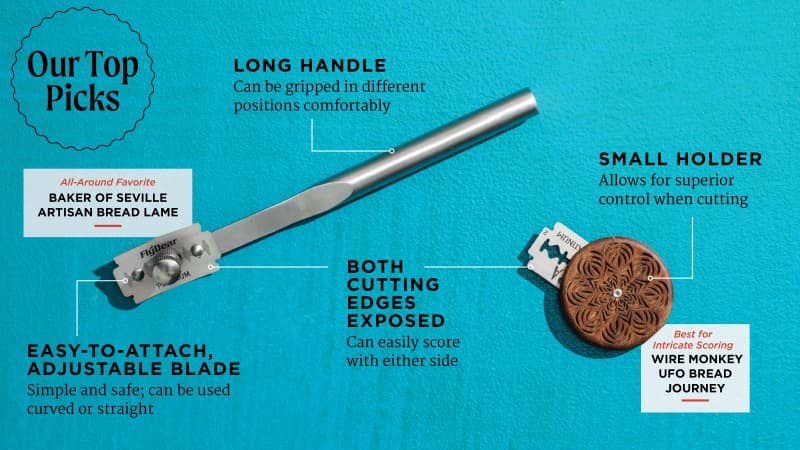
When you’re making crusty white or sourdough bread, it’s important to score, or cut, the dough before baking. Scoring is first and foremost functional: It allows your bread to expand properly, in a predetermined way, as it bakes. If you don’t score your dough, the loaf will develop odd ruptures and blowouts as the moisture inside it heats up. But scoring is also decorative: Cutting lines, patterns, or shapes in the dough will give your finished loaf an attractive, professional-quality look.
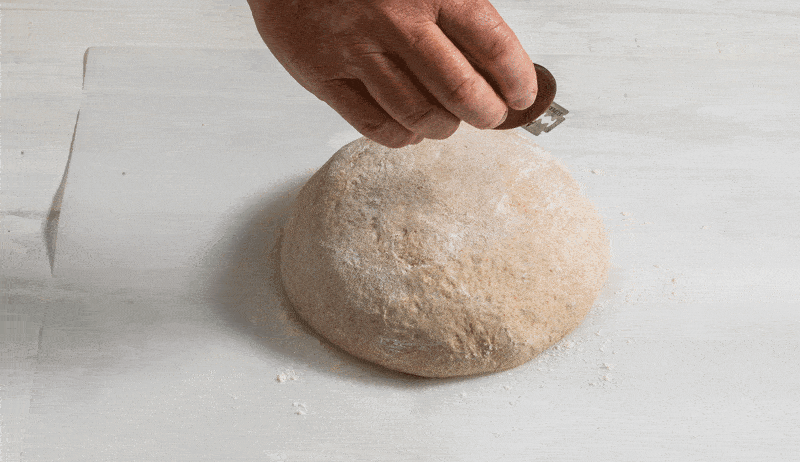
You can score dough using any sharp blade; a paring or even utility knife will do. But if you bake a lot of bread, it’s worth getting a dedicated tool called a lame, which can make the task easier and the results better looking. The word “lame” (pronounced lahm) means "blade" in French, and indeed, a lame is basically a razor blade attached to a holder. This particular type of razor blade is much thinner and sharper than any other blade you might use, so it slices through sticky dough far more nimbly, dragging less and creating cleaner, more well-defined lines.
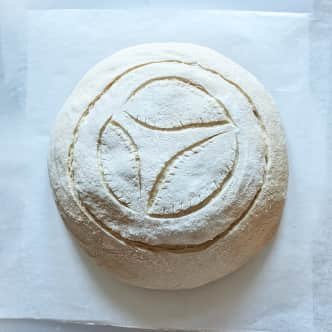
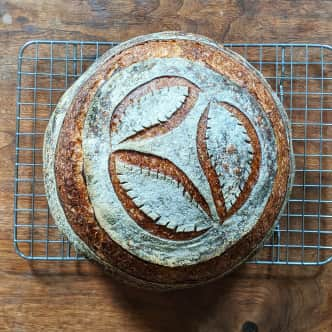
An intricately scored loaf shown before (left) and after (right) baking.
We tested a variety of lames on different types of bread doughs to see which features mattered. Here’s what we learned.
What to Look For
- Easy Blade Attachment/Removal: Because a lame’s blade is incredibly sharp, we prefer to handle it as little as possible when attaching it to or removing it from the holder, in order to avoid cutting ourselves. Some lames required fussy, finicky, or slightly risky tinkering to attach the blade; we liked models that made the process simple, quick, and safe.
- A Holder That Exposes Both Cutting Edges of the Blade: When scoring, we generally cut with the top corner of the blade. We preferred models that exposed both sides of the blade, as these were easy for both righties and lefties to use. Straight blades that were exposed on both sides had an added advantage: They were also more convenient for users of either dexterity. Once one corner got dull or gunked up by dough, we could simply flip the whole lame over and use the other corner. That way, we avoided having to rotate the blade itself quite as often to get a clean corner.

- A Grippy Handle That’s Easy to Hold in Different Ways: We liked handles that were made of textured materials, as these were easier to hold securely. We generally preferred models that didn’t have dedicated grips, as these limited our hand positions. When scoring simple ears on loaves and baguettes, for example, most bakers recommend holding the lame toward the back of its handle. But for more complicated scoring, it’s best to choke up on the handle to get better control over the blade. (One of the lames we tested can only be held one way, but it put our hands practically on top of the blade. It provided superior control; we’ve named it our favorite lame for intricate scoring.)

Nice to Have
- A Case or Blade Cover. While they weren’t essential, we appreciated models that came with either a case or a blade cover, as they were easier to store safely and prevented us from accidentally cutting ourselves.
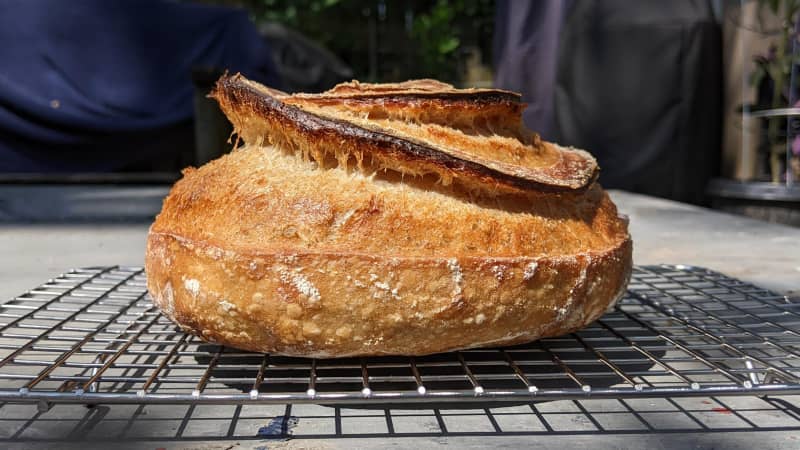
Other Considerations
- Curved Blade or Straight Blade? All lames use similar double-edged blades, but that blade can be either straight or curved depending on how it’s attached to the holder. With most lames, you can only configure the blade straight or curved. A few models give you both options; they’re either double-headed or adjustable. Professional bakers swear by lames with curved blades, as they can make a slightly more pronounced ear, the flap of dough that sticks out from a simply scored loaf or baguette. Traditionally, a sail-like ear is seen as a sign of well-made bread, and it’s especially important when scoring baguettes, as you’re essentially making a series of shorter ears. But in our testing, the difference between ears made by a curved blade and ears made by a straight blade was fairly minor and was aesthetic not functional. Straight blades can make good-looking ears, too, and they’re far easier to direct and control, making them better for more intricate decorative scoring. Ultimately, however, blade preference—straight or curved—is personal. Our favorite lame provides the best of both worlds, allowing you to adjust the blade so that it can be used straight or curved, so you can decide which configuration works best for you.

The Tests
- Score 10 loaves of pain au levain, using a variety of straight and curved designs
- Score 8 baguettes
How We Rated
- Ease of Use: We rated the lames on how easy it was to attach and remove blades and on how easily both right- and left-handed bakers could score.
- Performance: We rated the lames on how well they created simple ears and more intricate scoring patterns.
- Comfort: We rated the lames on how easily and securely we could grip them, including in different positions when applicable.

